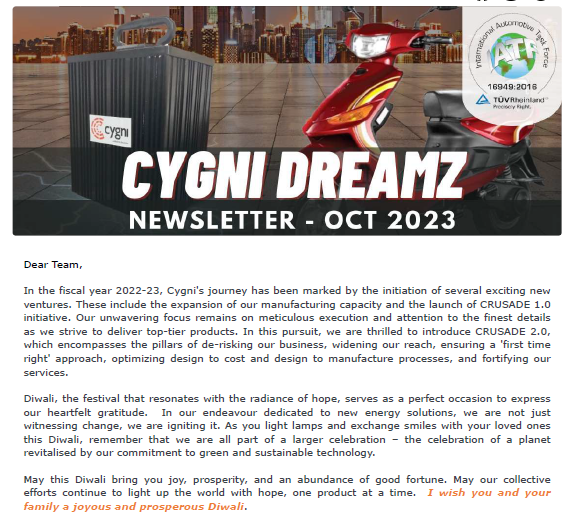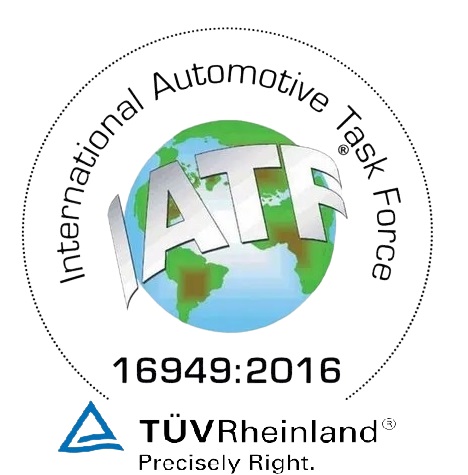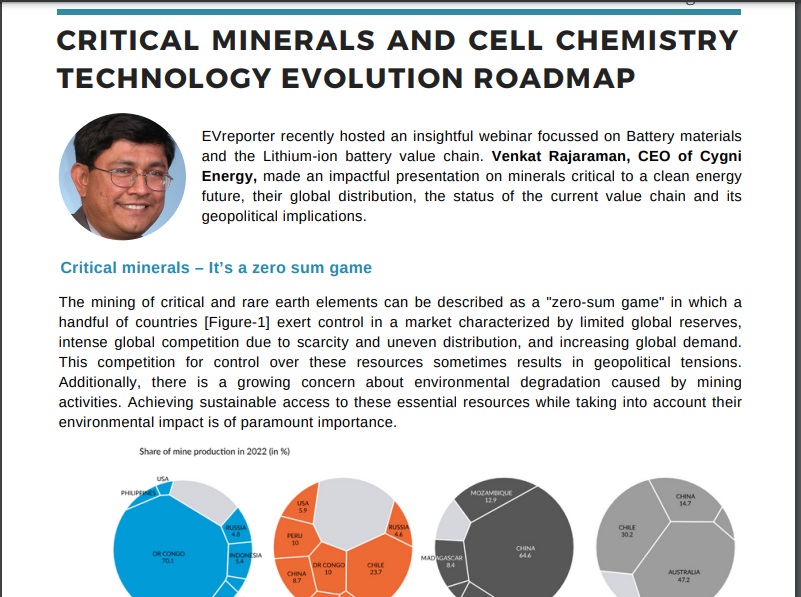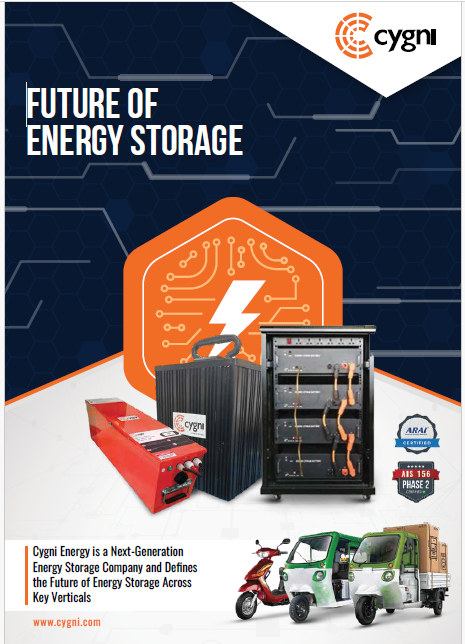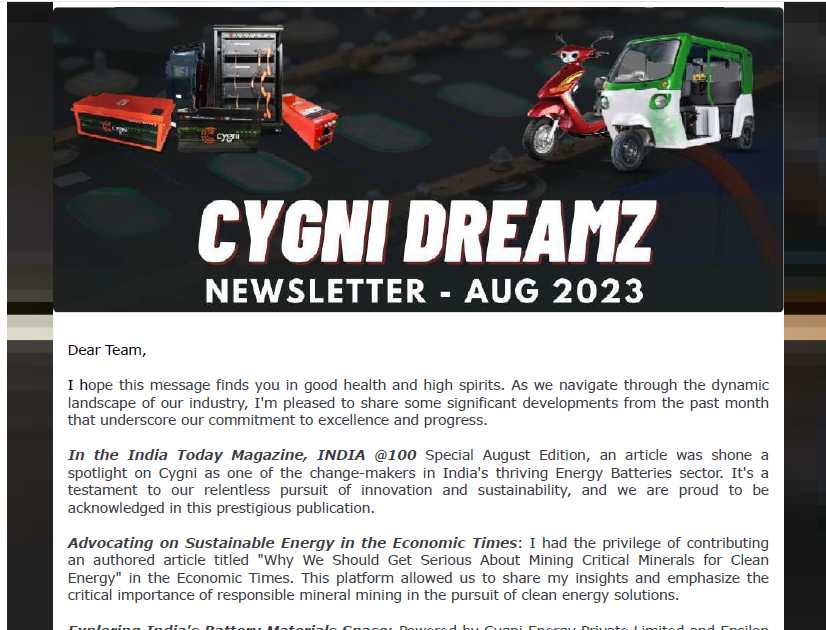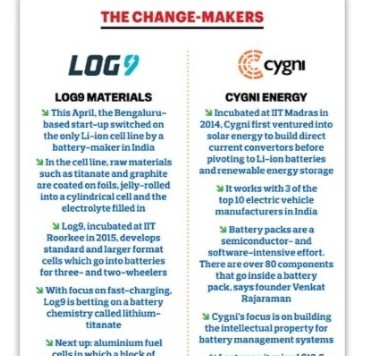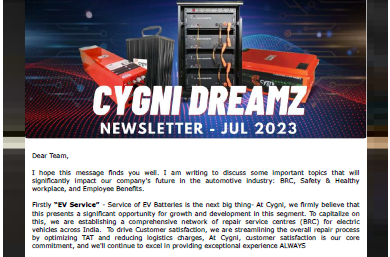Click Here- Cygni Newsletter – Sep 2023 Edition
EV Reporter recently hosted an insightful webinar focused on Battery materials and the Lithium-ion battery value chain. Mr. Venkat Rajaraman, CEO of Cygni Energy, made an impactful presentation on minerals critical to a clean energy future, their global distribution, the status of the current value chain and its geopolitical implications.
Read more : Lithium Battery and Critical Minerals
Download Corporate Brochure- Cygni Brochure
Click Here- Cygni Newsletter – Aug 2023 Edition
India Today magazine dated 28-Aug-2023 is a special edition on “The revolutions needed in 10 key sectors in India“. The Energy Batteries is one such revolution highlighted and Cygni Energy is proud to be featured in this article.
Batteries are critical to India’s plans to cut oil bills and generate 500 GW of green energy by 2030. Battery technology involves advanced chemistries and electronics, and India has to rapidly create an ecosystem for that, if it has to do justice to its quest for higher energy density. The key approaches in this direction are to replace today’s graphite anodes with lithium metal and liquid electrolytes with solids.
Read the Article- India Today Article
In association with Cygni Energy. EV-reporter hosted an insightful webinar on India’s Battery Materials Space and the roadmap to customer qualification. The discussion was extremely informative and shed light on the critical aspects of battery technology development in India. Kudos to the panelists for their valuable insights for fostering knowledge sharing in the electric vehicle industry
Webinar Video- India’s Battery Materials Space
The mining of rare earth elements is highly competitive due to limited global reserves and growing demand from clean energy technologies and electronics. This competition exacerbates geopolitical tensions. Environmental concerns and complexities of extraction pose additional challenges to ensuring sustainable access to these resources.
Read more : Lithium Battery and Critical Minerals
 Newsletter
Newsletter DEXTER Board
DEXTER Board
